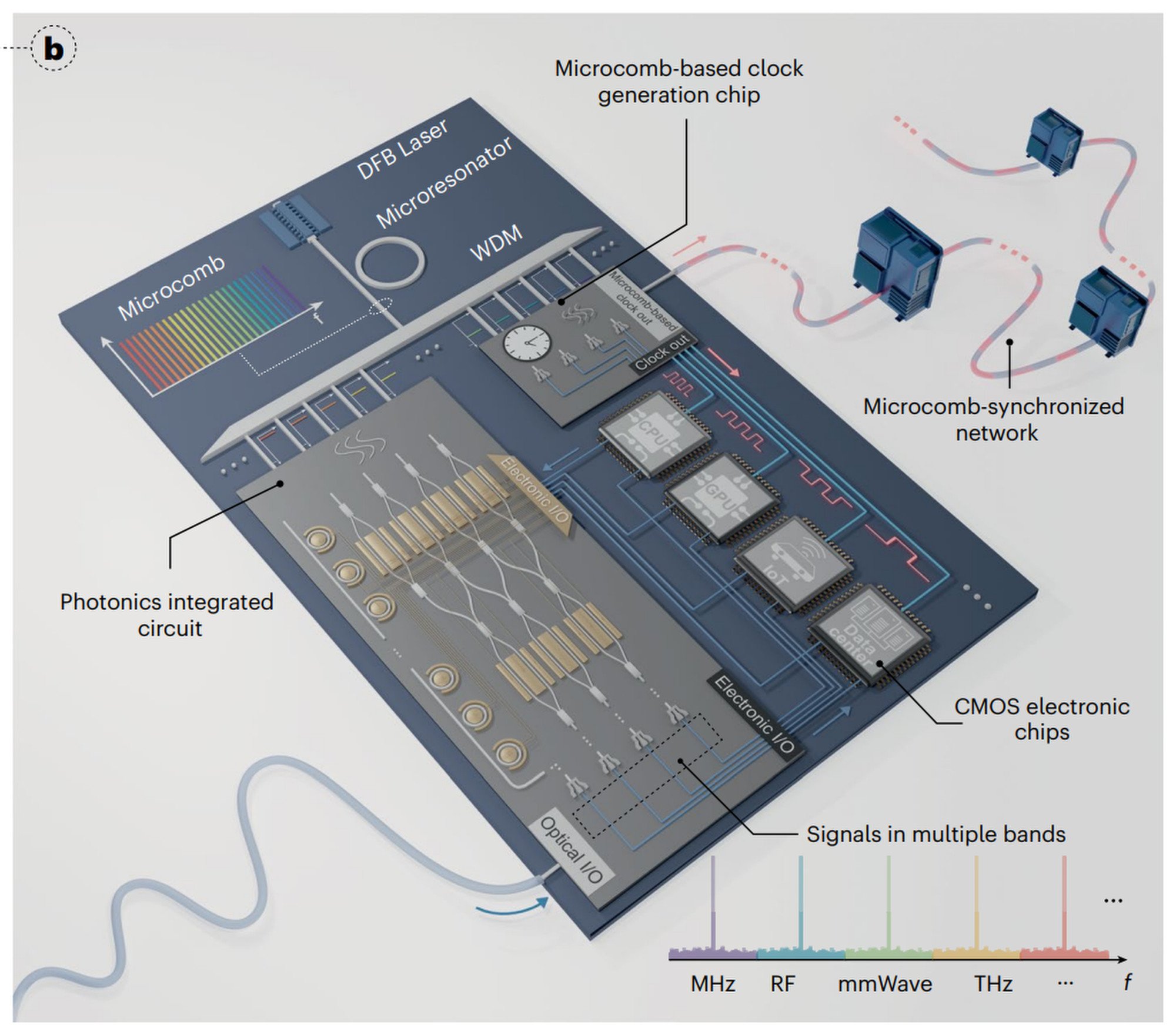All-optical 100 GHz chip shatters clock speed limits in dramatic boost for AI development, 6G, autonomous vehicles. — SCMP
A new 100 gigahertz chip that harnesses light – not electricity – to synchronise processors could unlock the future of high-speed AI computing, next-generation communications and remote sensing, according to an international group of scientists led by China’s Peking University.
The researchers said the all-optical design redefined how clock signals were generated for chips, opening the door to faster, more efficient computing.
The main processor of any computer – its central processing unit (CPU) – relies on the steady pulse and specific frequency generated by a clock signal to synchronise its internal functions.
The speed of a processor – its clock speed – governs how quickly a CPU can execute instructions and is measured in gigahertz (GHz). For example, a CPU with a clock speed of 2 GHz can perform 2 billion clock cycles per second.
Generally, the higher the clock speed, the more instructions a CPU can execute in a given period, meaning greater computing capabilities.

The team, consisting of members from the state key laboratory of advanced optical communications systems and networks at Peking University, the Chinese Academy of Sciences’ Aerospace Information Research Institute, and the University of California, Santa Barbara in the United States, published their findings in the peer-reviewed journal Nature Electronics last week.
Lead author Chang Lin, an assistant professor at the Institute of Information and Communication Technology at Peking University, said the team chose light as the medium for transmitting and processing information to improve computing speed.
Traditional chips generated clock signals using electronic oscillators, but this method consumed too much power, created immense heat, and did not significantly boost speed, Lin told state-run Guangming Daily.
Another downside: chips can often only operate at one primary clock speed, meaning different applications require completely different chip manufacturing technologies, driving up the cost of chips.
“Our chip uses light as a medium to generate clock signals through photons,” Chang said. “Light travels much faster than electricity, so using photon clocks to process information is much faster than electronic clocks.”
The team developed an “on-chip microcomb” that can synthesise single-frequency and wideband signals that cover a broad frequency band and provide reference clocks for the electronics in the system, according to the study.
“By building a ring that looks like a racecourse on the chip, light can continuously ‘run’ at the speed of light. The time of each lap is then used as the standard of the on-chip clock,” Chang said.
“Because a lap would take a few billionths of a second, the clock can regulate time at an ultra-high speed.”
Chips equipped with the new technology could cover various microwave frequency bands, Chang added.
“This chip supports mobile phone communications from 5G to 6G, as well as even higher speeds. With the new chip technology, there is no longer a need to update mobile phone hardware every time communication technology advances,” he said.
“While existing GPUs and CPUs run at around 2 to 3 GHz, our team has achieved a clock speed of more than 100 GHz. This means that we can calculate more in a shorter time, providing stronger computing power for the development of artificial intelligence.”
The team said they could produce thousands of identical chips on 20cm (8-inch) wafers, while they continued to work on resolving stability issues and optimising packaging processes, according to the MIT Technology Review China.
Solving those problems would lead the way to consumer-friendly applications.
Peking University said the new technology would “bring revolutionary changes to the fields of communication and perception”.
“It can significantly reduce energy consumption and equipment costs for mobile phone base stations, while improving perception accuracy and response speed in autonomous driving,” it said. – South China Morning Post





